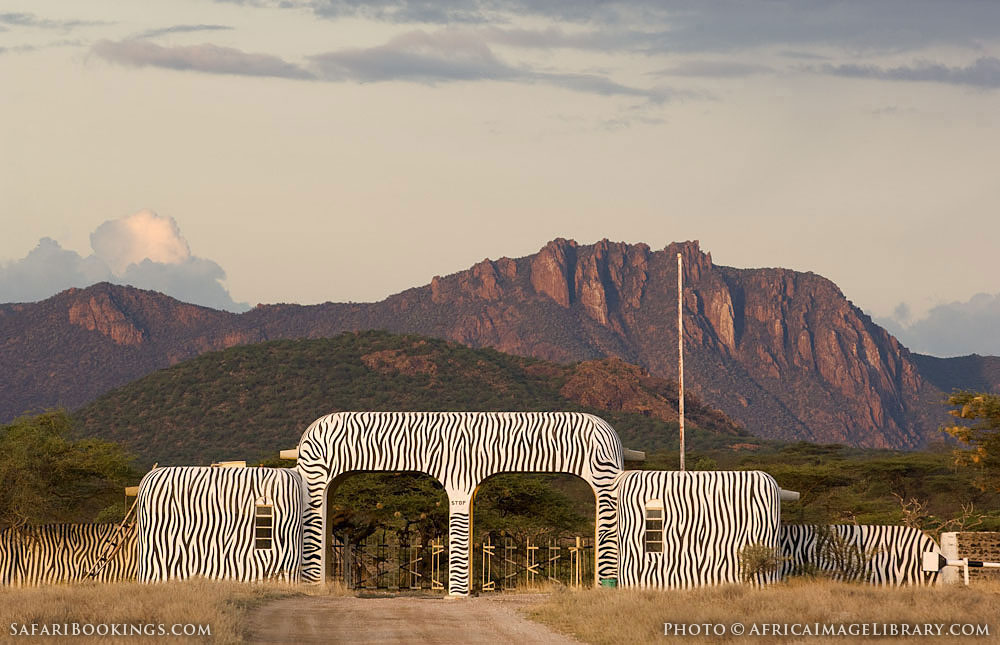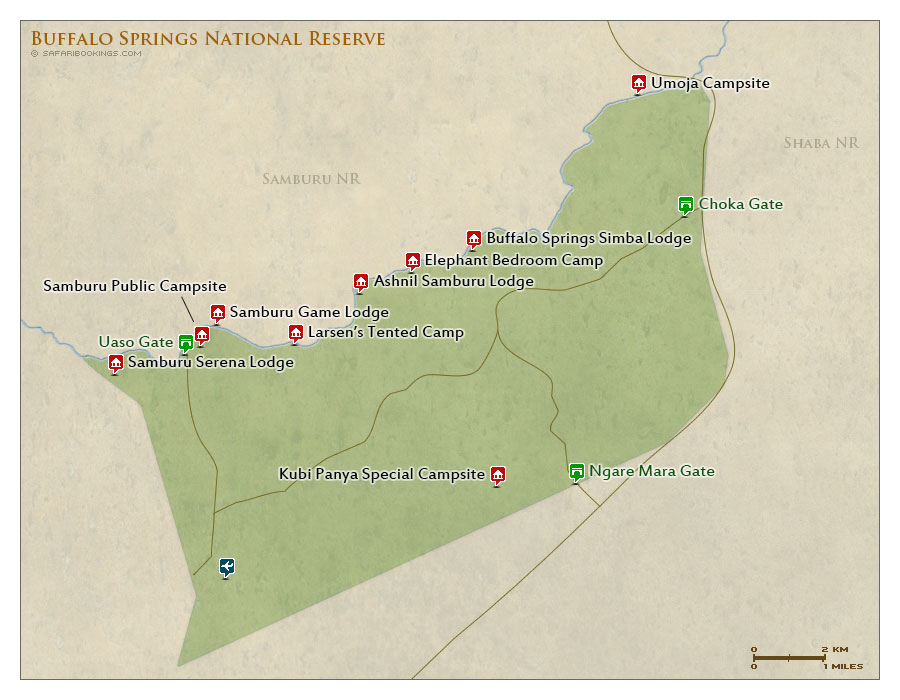Buffalo Springs National Reserve
IUCN Category II - National Park
BWf1
The Buffalo Springs National Reserve (English: Buffalo Springs National Reserve ) is a nature reserve in northern Kenya. It is 131 km ² and is near Isiolo in Eastern Province, 85 km north of Mount Kenya. The capital of Nairobi is 112 km away. Its height above the sea level is 800-1230 m. The Buffalo Springs National Reserve takes its name from an oasis of crystal clear water at its western end. The Buffalo Springs continuously hold water for wildlife and for Archers Post, a nearby town, ready.
With an annual rainfall of less than 400 mm - by the location on the leeward side of Mount Kenya there is little rain - the Buffalo Springs National Reserve is characterized by dryness. Here acacia and Doumpalme Hyphaene thebaica occur. The predominant forms of vegetation are dry bushland and open grassland. Only on the banks of the Ewaso Nyiro, which flows through the reserve, grows a narrow gallery forest. However, the earlier year-round water-bearing river dried up since the late seventies from occasionally because upstream too much water is taken for agricultural purposes. Still, these are a few weeks, so that the elephants can survive by digging of water. The annual amount of water Uaso Nyero reduced further, however, the area is unsuitable for elephants.
In addition to reticulated giraffe and Grevy's zebras steppe and here come buffalo, hippos, warthogs, Small kudu, eland, oryx, gazelles, giraffes, gazelles, impala, waterbuck and two Dikdikarten, including the Gunther 's Dik-dik, before. At predators there are lions, leopards, cheetahs and African wild dogs, and striped and spotted hyena. In Buffalo Springs National Reserve crocodiles, for example, Nile monitors, as well as 450 species of birds, including the martial eagle, the Geierperlhuhn, the Kori Bustard and the Somali ostrich live.
The Buffalo Springs National Reserve forms with the adjacent Samburu National Reserve, from which it separates only the Ewaso Nyero, a unit. The few miles east location Shaba National Reserve is part of the same ecological area.
The elephant populations of the three reserves are no longer constant. 1973 were counted in 2500 animals, 1976 and 1977 there were only 531 Occasionally herds migrate from the north. These are much shyer than their local counterparts, who are accustomed to the here particularly pronounced mass tourism.
During the Mau Mau uprising, the freedom fighters used the Buffalo Springs National Reserve as a retreat. On his flight to Ethiopia, the route of their General Mathenge led by the same.










